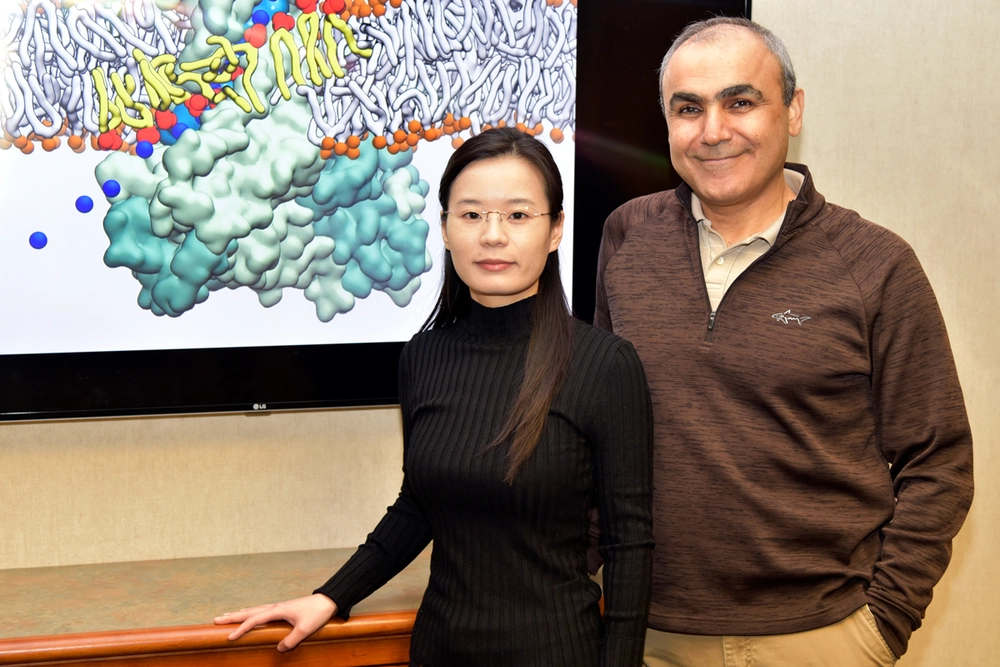
The Tajkhorshid lab used computational microscopy to investigate how lipids can influence the structure and function of protein channels in cells. Their findings were published in the Proceedings of the National Academy of Sciences.
Members of the NIH Center for Macromolecular Modeling and Bioinformatics at the Beckman Institute recently published a paper that uses computational microscopy to visualize how lipids can influence the structure and function of protein channels in cells.
All living cells are surrounded by a membrane that is made of phospholipids. These molecules have a hydrophilic head group that is charged and faces outward, and long, uncharged, hydrophobic tails that reside in the core of the membrane.
Among this sea of phospholipids, there are proteins that span the membrane and mediate transport of materials such as ions and nutrients from one side to another. Lipid molecules not only provide the medium for membrane proteins, they also regulate their activity. However, experimentally, studying lipid and protein interactions is extremely challenging due to the fluid nature of lipids. Therefore, the researchers used computational methods to study these interactions.
